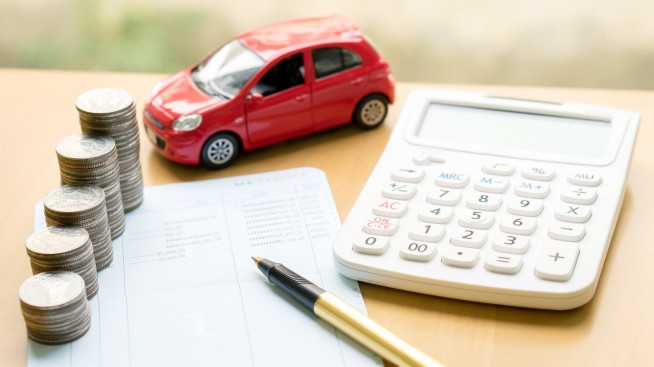Car loan APR: What does it mean?

When it comes time to finance a new or pre-owned car, several terms are important to understand. One such concept is the annual percentage rate, or APR. The APR expresses the total cost of borrowing which may differ among lenders based on how they set their rates, and the fees they charge. Your credit score and the amount you borrow will also affect the APR on your loan. Learn the APR meaning for car loans and how to use this information when purchasing your next vehicle.
What is car loan APR?
Unless you’re paying cash for your new automobile, a car loan will likely be necessary. But a loan comes with a cost, as lenders charge interest on money borrowed. A loan’s APR reflects the interest charged by a lender, but it also takes into account certain fees associated with the loan. These fees are called “prepaid finance charges” and may vary widely between lenders, so watch for them.
One good example of a prepaid finance charge is an “origination fee” which some lenders may charge to cover costs associated with underwriting their loans, and/or to simply increase their fee income. This fee could be a lot or a little or may not be charged at all. Such fees are factored into the APR so you can compare the true, total cost of borrowing between different lenders.
Why is APR important?
Although low interest rates can be attractive to car buyers, the APR is the number to look at because it gives you the actual amount your financing will cost if you make all payments as scheduled. Using the APR to understand your costs is more accurate than using an interest rate and can help you in your car buying decision.
What is an average APR for a car loan?
The APR for a new car loan for someone with excellent credit can be substantially lower than for someone who has poor credit. Moreover, extra fees from your lender or dealership can increase your APR significantly. If you choose to finance these charges as part of your car loan, they’ll cost you even more in the long run. Since rates and fees can vary widely, it’s essential to understand interest rates and APR.
Car loan APR versus interest rate
When reviewing financing details and picking a lender, it’s important to compare APRs. According to the Consumer Financial Protection Bureau (CFPB), an auto loan’s interest rate is the cost you pay each year to borrow money expressed as a percentage. The interest rate does not reflect fees charged for the loan. The APR is the cost you pay each year to borrow money, including certain fees, such as origination fees, expressed as an annual rate.
Factors used to determine car loan interest rates
Lenders calculate interest rates on an individual basis, meaning there isn’t a fixed rate used for everyone. Instead, your lender looks at various factors to determine your interest rate, then adds any fees or prepaid expenses to compute your APR. Before providing loan documents and rates, lenders may consider:
- Credit history and score
- Down payment amount
- Length of your loan
- Age of the vehicle
- Length of time at your current job
- Your income and expenses
Fees that increase APRs
If there are no prepaid finance charges involved in your loan, your APR and interest rate are the same. Your APR is higher than an interest rate when certain fees are applied. Ask your dealer or lender to show you an itemization of your prepaid finance charges and their effect on your APR, as compared to your interest rate. Your APR is the true cost of borrowing.
How to determine your APR on a car loan
Prequalification is an excellent way to find out if you're able to get a loan and what your estimated costs may be.
You can also ask your dealer or lender about the fees and APR associated with the loan you’re interested in. Then before you sign on the dotted line, carefully review your Truth in Lending (TIL) disclosure, required by the federal Truth in Lending Act (TILA). This document requires lenders to provide consumers with loan details, such as your annual percentage rate and itemization of amount financed, before the borrower signs a loan agreement. The APR information must be disclosed very clearly on your loan documents, and dealers and lenders can answer any questions you have regarding your costs or payments.
Explore vehicle financing options
Financing a car is a big deal, and it can feel overwhelming. Fortunately, many resources exist to help you navigate buying and financing a vehicle. If you're ready to shop for or finance a car, check out the Chase Auto site. You can find details about financing, maintaining your vehicle, and much more.



